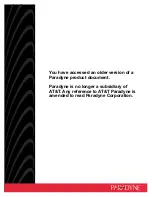Reviews:
No comments
Related manuals for s5800 series

MCC
Brand: Paradyne Pages: 11

Hotwire 8784
Brand: Paradyne Pages: 19

Hotwire 7995
Brand: Paradyne Pages: 32

COMSPHERE 3550 Series
Brand: Paradyne Pages: 153

Jetstream CPX-1000
Brand: Paradyne Pages: 141

FrameSaver 9783
Brand: Paradyne Pages: 28

COMSPHERE 6800 Series
Brand: Paradyne Pages: 7

U5-24-500W
Brand: Ubiquiti Pages: 23

Wireless Mini PCI Module
Brand: E-Tech Pages: 42

SINUS H PROFInet
Brand: Enertronica Santerno Pages: 34

NV-ER1816i
Brand: Tbus Pages: 25

4midiloop
Brand: Faderfox Pages: 10

RV2458
Brand: Magnadyne Pages: 8

NFX250
Brand: Juniper Pages: 7

CDG561 WE~P21
Brand: Zalip Pages: 77

EtherFast LNE100TX ver. 5
Brand: Linksys Pages: 42

UT-300R2U
Brand: UTStarcom Pages: 71

FWS-7150
Brand: Aaeon Pages: 57

















